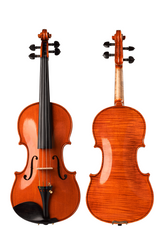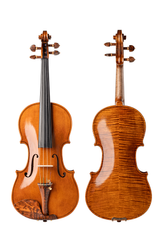Camille Saint-Saëns: The Prodigy Who Shaped French Classical Music
Born in Paris in 1835, Camille Saint-Saëns was a French composer, organist, and pianist who played a key role in shaping Romantic-era music. Over his 86-year life, he produced a vast catalog of symphonies, concertos, operas, and chamber music that continues to inspire musicians today.

Early Genius: A Childhood Marked by Talent and Tragedy
Camille Saint-Saëns was born on October 9, 1835, into a civil servant's family. Sadly, his father passed away when he was just two months old, leaving him to be raised by his mother and great-aunt Charlotte. Under their nurturing guidance, Saint-Saëns began piano lessons at the age of two and a half and showed exceptional musical understanding from an early age.
By age three, he had composed his first piece. At ten, he performed a full recital, showcasing works by Mozart, Handel, and Bach. Saint-Saëns entered the Paris Conservatory at age thirteen, where he studied under Fromental Halévy and François Benoist, honing both his composition and organ-playing skills.
Paris in the Romantic Era: A Hub of Inspiration
Mid-19th century Paris was a vibrant center for the arts. Influences from composers like Liszt and Berlioz were all around, and Saint-Saëns thrived in this atmosphere. Although he attempted the prestigious Prix de Rome twice, he was denied both times—first for being too young, and later for being too well-established. Undeterred, he won acclaim elsewhere and continued composing prolifically.
In 1853, Saint-Saëns graduated from the Conservatory and became an organist at Saint-Merri Church. Later, he was appointed to the renowned La Madeleine Church, where his improvisational brilliance on the organ earned him high praise—Liszt once declared him the greatest organist in the world.
Teaching and Mentoring: Fauré and Future Legends
Saint-Saëns wasn’t just a performer; he was also a passionate educator. In 1861, he began teaching at the École Niedermeyer, a school focused on church music. Among his students were Gabriel Fauré and André Messager, both of whom went on to become prominent figures in French music.
He also had contact with Richard Wagner during this period. Wagner admired Saint-Saëns’s ability to sight-read and assist in piano reductions of complex orchestral works.
The Violin and Sarasate: A Powerful Collaboration
In the 1870s, Saint-Saëns met violinist Pablo de Sarasate, whose virtuosic playing inspired him to write some of his most famous violin works. Pieces like “Introduction and Rondo Capriccioso” and Violin Concerto No. 3 were dedicated to Sarasate and became staples in the violin repertoire.
Personal Tragedy and a Troubled Marriage
In 1875, Saint-Saëns married Marie-Laure Truffot. The couple had two sons, but tragedy soon struck. One child died from a fall, and the other succumbed to illness shortly after. Overwhelmed with grief and unable to forgive, Saint-Saëns left the marriage and lived apart from his wife for the rest of his life.
In 1888, the death of his beloved mother led him into a period of self-imposed exile. He traveled extensively, performing in countries like Egypt and Algeria, where he also found relief from the cold Paris winters.
A Lasting Legacy in Music
Saint-Saëns passed away in Algeria in 1921 at the age of 86. His body was returned to Paris, where he was honored with a state funeral. Over his lifetime, he composed more than 169 published works, including:
-
5 symphonies
-
13 operas
-
5 piano concertos
-
3 violin concertos
-
2 cello concertos
-
Numerous chamber works, songs, and sacred music
His music is known for its clarity, structural precision, and elegant melodies. In 1871, after the Franco-Prussian War, he co-founded the National Society of Music in France, which played a crucial role in promoting new French music and nurturing young composers.
Honors and Recognition
Saint-Saëns received the Legion of Honor in 1868, became a member of the French Institute in 1881, and was awarded an honorary doctorate by Cambridge University in 1893.
🎵 Why Camille Saint-Saëns Still Matters Today
Saint-Saëns believed that composing music was as natural to him as breathing. His contributions to Romantic music and French cultural identity remain unmatched. Whether you're exploring symphonic masterpieces or studying organ literature, Saint-Saëns is a name that continues to resonate across generations.
🎻 Start Your Violin Journey Today
Inspired by Saint-Saëns’s legendary violin compositions? Whether you're just beginning or already advancing, our curated violin collections at Fiddlover Violin Shop offer something for every player:
-
Beginner Series – Easy to play and affordable
-
Intermediate Series – Balanced tone for growing skills
-
Fine Violins – Crafted for expressive, professional performance
Explore now and find the violin that suits your musical voice.





